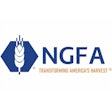
The fight over the U.S. Farm Bill is beginning, with the current bill getting ready to expire at the end of September and a divided U.S. Congress.
President Trump signed the current farm bill into law in December 2018. House Ag Chairman Glenn 'G.T.' Thompson (R-Pa.) wants to develop a deal on a new Farm Bill before this one expires.
The new bill will need to be written and passed while Democrats and Republicans are expected to fight over the federal budget. And because the Farm Bill tackles the farm safety net and nutrition programs like Supplemental Nutrition Assistance Program (SNAP), expect a battle over where money is allocated within the new bill.
Ag groups unite on Farm Bill
A group of 400 agriculture groups sent a letter to the Senate Committee on Agriculture, Nutrition, and Forestry and the House Committee on Agriculture on March 14 outlining what they feel the agricultural industry needs over the next four years. Since the last Farm Bill was signed, these groups claim that the turbulent ag economy has shown holes in the current farm safety net.
The groups point to the 2018 trade war with China where, even though the ag economy suffered heavy losses, the Title 1 safety net provision of the bill was barely triggered. The groups are asking for a predictable farm safety net and increased investment in trade promotion programs to help diversify agricultural markets.
"If a trade war capable of halting all sales of soy to our largest trading partner hardly triggered the farm safety net in the current farm bill, it's hard to envision a scenario that would provide real assistance without making significant improvements," said Daryl Cates, a soybean farmer from Illinois and American Soybean Association President, in a statement.
Farm safety net needs to be improved
The ag groups point to other financial difficulties outside of the industries' control as further proof the farm safety net needs to be improved, including the invasion of Ukraine, COVID-19, non-tariff trade barriers and natural disasters.
Rising input costs and lower projected returns have the USDA Farm Income Forecast projecting a decline of up to 20.7% in net cash farm income, putting producers in an even more fragile situation.
The groups note a more robust and transparent farm safety net will help eliminate the need for ad hoc assistance from the government, which made up 70% of direct aid between 2018-2021.
Other hopes for the Farm Bill include:
- Enhanced crop insurance
- Improved access to voluntary conservation incentives
- Addressed rural development needs
- Investment in research for innovation and competitiveness
- Opportunities for energy independence and food security
- Support solutions to address logistics challenges
The letter asks congressional leadership to provide the committees with the resources needed for a "new bipartisan, multi-year, comprehensive, and meaningful piece of legislation."
.jpg?auto=format%2Ccompress&crop=faces&fit=crop&h=48&q=70&w=48)
















